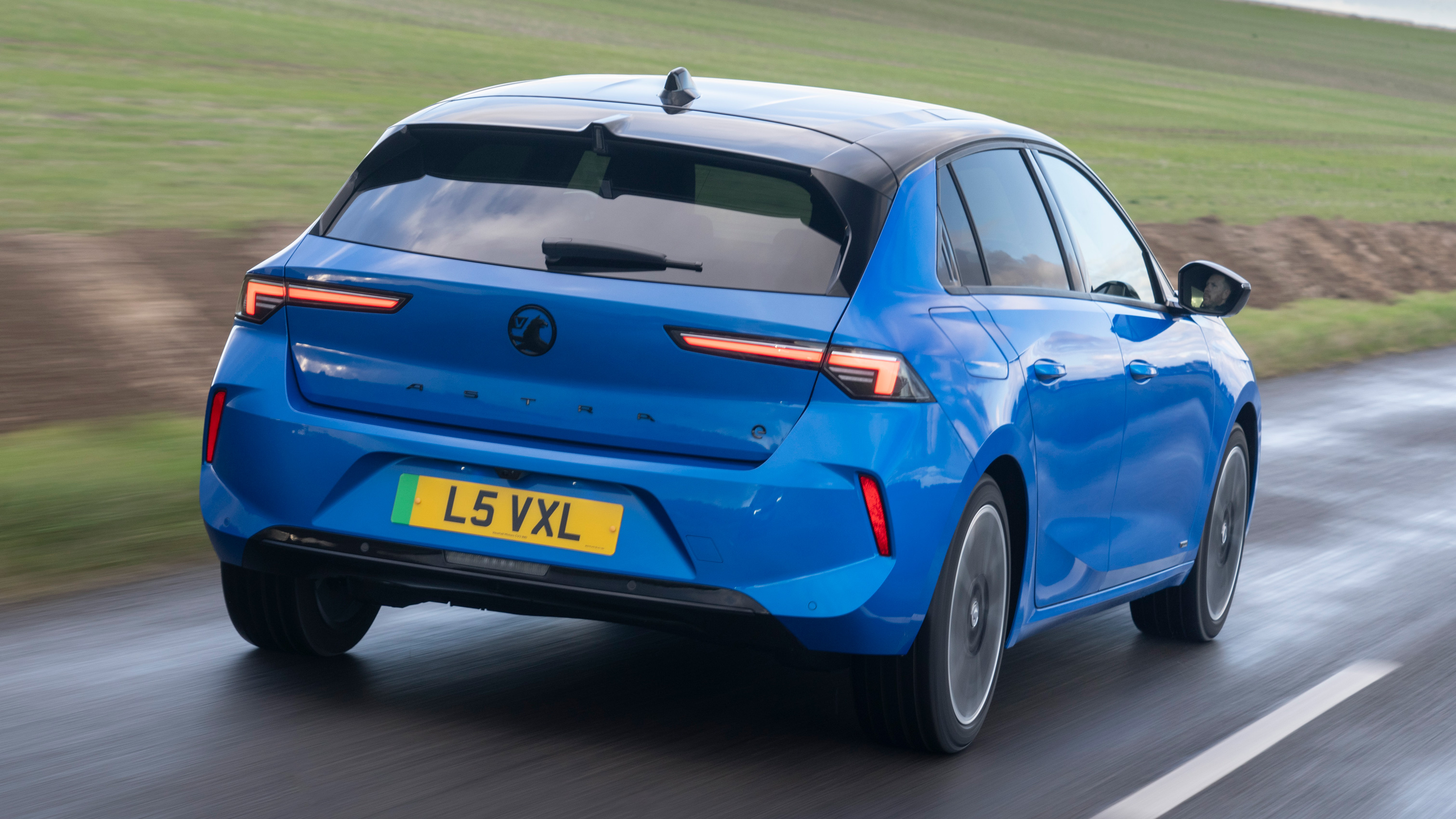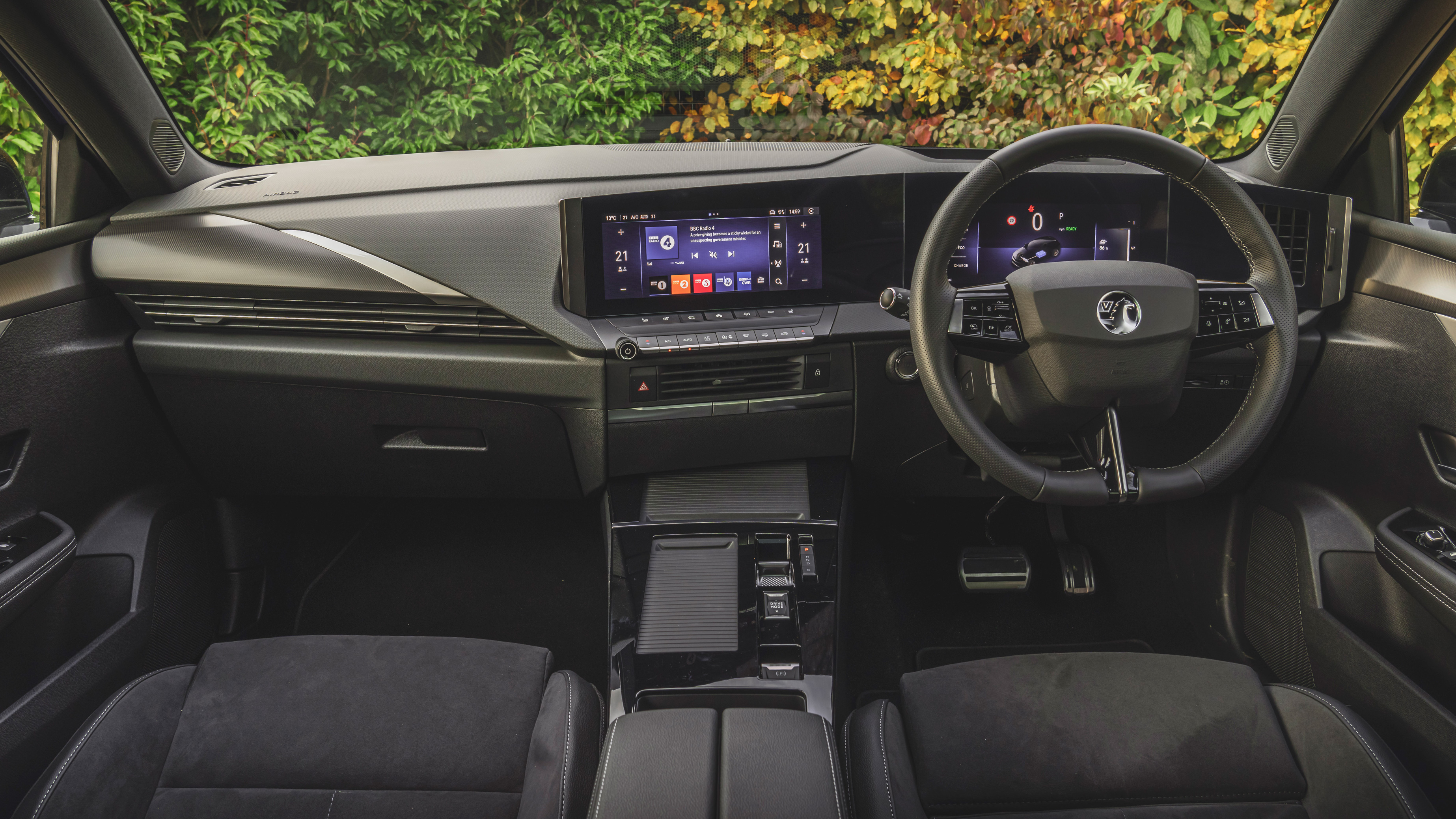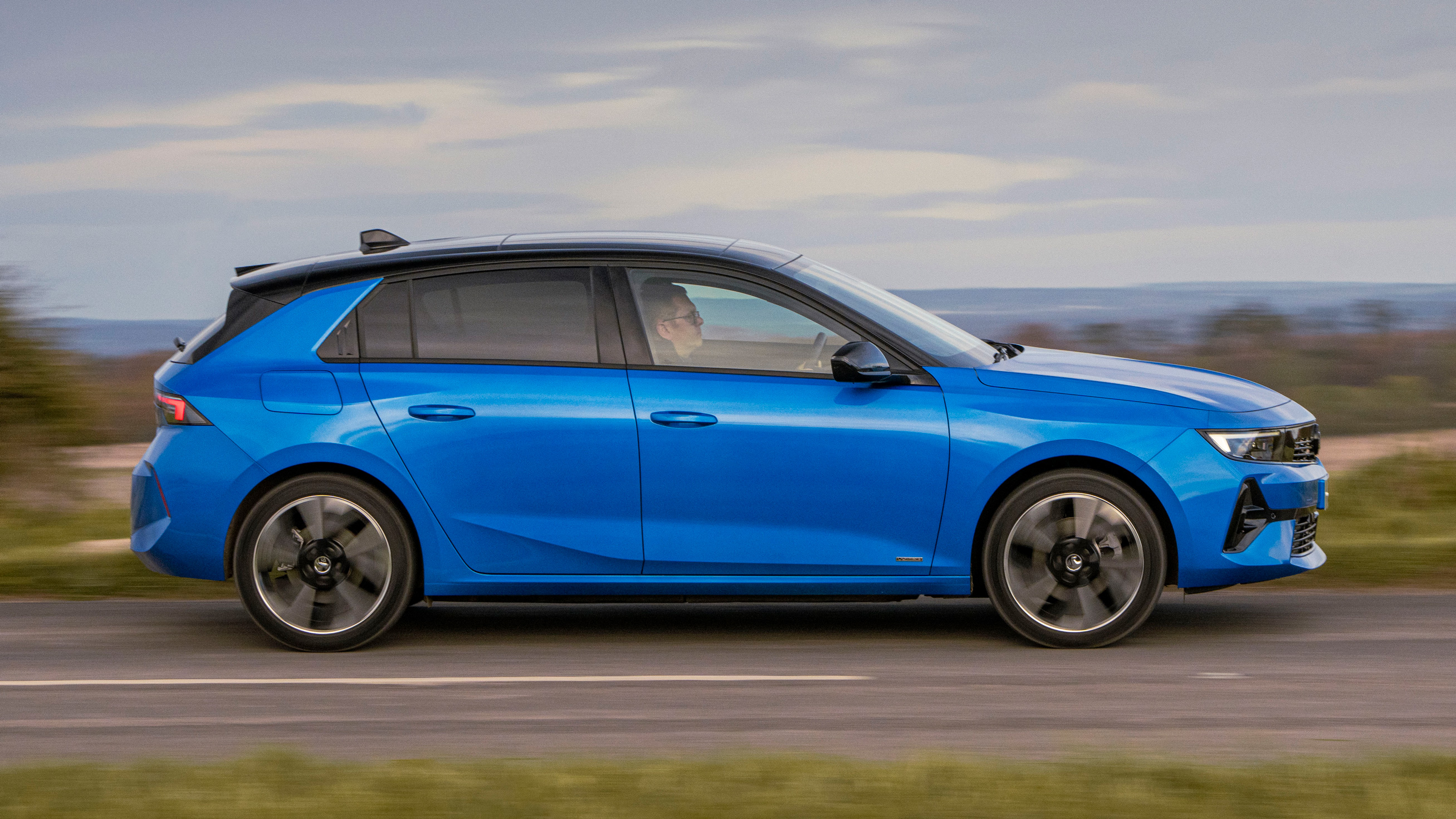
Interior
What is it like on the inside?
There’s more strong styling from Vauxhall in here, although if you’re familiar with the eighth-gen Astra already then you may be better off just skipping to the Buying tab of this review.
That's because save for a couple of extra battery and efficiency displays in the screens, the interiors of the ICE cars and the Electric are identical. It’s generally a very nice cabin with good materials. Certainly better than the miserable Corsa.
Up front a large glass panel houses a 10-inch digital instrument cluster. Another 10-inch screen, this one touch-sensitive, does for the infotainment. So far so straightforward. But in sensible news, it's not touch-only: there are proper buttons on the steering wheel and a full panel of physical climate controls, as well as some shortcut buttons under the infotainment screen. Hurrah!
Top-spec Ultimate models get an additional head-up display. It shows speed, speed limit reminder, driver assist graphics, nav arrows, upcoming songs and phone callers, depending on context.
You can configure the centre panel and instrument panel to show more than one of your favourite things. For instance entertainment and navigation junction arrow on the centre screen, plus trip computer and energy flow on the driver screen. So you don't need to keep swiping between displays.
Wireless Apple CarPlay and Android Auto are standard fit, as is ambient lighting with eight different ‘moods’.
Will I be comfy?
The Astra has great front seats. The driver’s seat in the Astra Electric – plus the passenger's in Ultimate trim – is AGR approved. That's essentially a German campaign for healthier backs. It adjusts in a ridiculous number of ways both manually and electrically. It’s supremely comfortable and supportive and clad in a soft fabric. The driving position is mercifully low-slung and sporty compared with crossovers.
In the back seat there isn't a huge amount of legroom or foot room, so rear passengers will be relying on those up front to jack up their seats to create a bit of wiggle room. The Sports Tourer purports to offer more legroom, but we didn’t find a great deal of difference when we tested both cars.
Boot space isn’t massively affected by going all-electric. You get 352 litres in the hatch (the same as the PHEV) with all the seats in place or 1,268 litres if you fold the rears flat. That’s only slightly less than a combustion-powered Ford Focus, but does fall a fair way short of the Renault Megane E-Tech Electric. Again, for more get the Sports Tourer.
Featured

Trending this week
- Car Review
BMW 1 Series
- Top Gear's Top 9
Nine dreadful bits of 'homeware' made by carmakers






